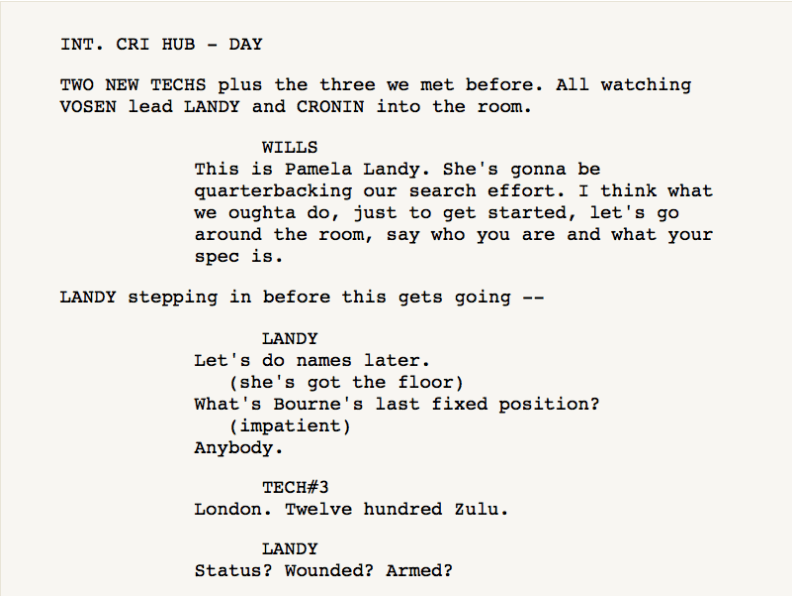Unless you had absolutely no choice, you wouldn’t hold your product brainstorming session in your office building’s cafeteria during the busy lunch hour. Nor would you hire a high-end developer and tell him he had to write all of your code in Microsoft® Word®. In each of these examples, those would obviously be the wrong tools for the job. And yet…
Product managers across every industry build and maintain their product roadmaps in Excel®. A roadmap is one of the most important documents in a product manager’s arsenal for shepherding a product from concept, through strategizing, through stakeholder buy-in, and ultimately through successful market releases. Why, then, do so many PMs choose to develop this document — which should be strategic, visual and easy to share — using a detail-focused spreadsheet tool designed for neither presentation nor collaboration?
Until recently, the primary reason product managers used Excel for their roadmaps was the same reason they also often chose PowerPoint®: Those were the tools everyone had on their desktop and were most familiar with.
But although today’s product managers can use native roadmap software to build and collaborate on their roadmaps, most PMs still don’t know these tools exist. So they persist with the square-peg, round-hole method of forcing their roadmaps into more familiar tools.
To get an understanding of just how insufficient Excel can be for roadmapping, let’s take a step away from product management. Let’s look at how another industry leverages the right software to get things done — and how that industry’s professionals would be affected if this industry-specific software didn’t exist.
The Hollywood Screenwriter’s Equivalent of Roadmapping in Excel
Nearly all screenwriters in the movie and TV business write their scripts using an application called Final Draft. As the software company explains, this tool “automatically paginates and formats your script to industry standards.” It also provides the screenwriter a storyboard tool where they can take a strategic-level view of a scene, act or the entire film script. With all of these features working in the background, Final Draft’s makers explain, the app allows writers “to focus on what they do best: writing.”
Writing a script for television or feature film requires a lot of formatting setup. This extremely tedious undertaking involves establishing the margins for dialogue, different margins for actor direction within the dialogue, still different margins for action in the script, capitalizing actors’ names, conventions for introducing a new scene or act, etc.
With Final Draft, a screenwriter can simply start writing, and the software takes care of all of these details in the background. The output looks like an industry-standard screenplay, like the snippet shown below from the movie The Bourne Ultimatum.

Now imagine this screenwriter didn’t have Final Draft, or any similar scriptwriting software. Instead the writer had to use a simple text-editor application to draft the screenplay in plain text. The first draft would look like this…

This tool will not yield a draft that the writer can show her agent or producer. It doesn’t reflect the proper formatting, which means the writer will have to fix the entire thing manually when she’s done. And because the pagination doesn’t reflect an actual standard script page, the writer will have no idea as she’s writing how many script pages she has written for a scene or an act.
In other words, trying to write a screenplay using a text editor (or even, to a lesser extent, using Word) is like using Excel to draft your roadmap. It requires more manual effort for the input, and the output is often the wrong format for your audience anyway.
So…
Can Your Product Roadmap Excel In Excel? Nope. Here Are 4 Reasons Why:
1. A roadmap should be visual and easy to change views to focus on different areas — and Excel makes this very difficult.
Yes, you can build a roadmap in Excel and color-code your cells to identify various themes, teams, goals and other details. But this will take you only so far.
Your roadmap should allow for a visual view that you can easily adjust to highlight different areas of focus. You should be able to show a broad overview, for example, and then click a button to immediately expand your various themes, and then immediately jump into the details of a specific objective you’ve set for the product.
With Excel, your view is essentially always the same — fixed columns, rows, cells, etc. To show different views and differing levels of detail, you’ll need to create separate tabs, the equivalent of creating additional static documents.
The great thing about SaaS-based roadmap software tools is that you can easily link a strategic-level initiative to the next level of detail, and link that detail to yet another layer of detail. In other words, you can easily show the same roadmap document to any audience and limit your focus to only what matters to that audience — the high-level revenue goals for your executives, for example, and the development timeline for your engineers.
2. A roadmap needs to be collaborative — and Excel doesn’t lend itself to easy collaboration.
Although you as the product manager you technically “own” the product roadmap, a roadmap is not for you alone. It’s a collaborative document that you should be able to easily share with the various teams involved in the product’s development — your executives, your engineering or manufacturing department, sales, marketing, customer support, etc.
This is one of the reasons that product roadmap software can be so useful: Web-based SaaS applications allow you to create a dynamic roadmap that lives in a single place — the cloud. You can grant your various stakeholders access so they can view or update the roadmap anytime.
With an Excel spreadsheet, by contrast, you will likely be passing the roadmap file back and forth by email. This is not the ideal method for maintaining a collaborative document that many people, across many departments and possibly many geographical locations, will be accessing over time.
It also creates another problem: Version control.
3. You need to know that everyone is working from the same version of your roadmap — and an Excel file makes this difficult.
When product managers maintain their roadmaps in Excel, with the file passing back and forth around the company, it’s very easy for the initial file — ABC-product-roadmap.xls — to become ABC-product-roadmap–jhedits–v5-final–tsedits2–FINAL—FINAL-Mar032016.xls.
In other words, with a static-file roadmap flying around the company, it will be easy for your team to become confused, to mistakenly take their cues from an outdated version of the roadmap, and ultimately to delay or otherwise undermine your product’s development.
With native product roadmap software, the roadmap you create will live in the cloud, and you can control who can access, edit and update it. You can therefore ensure that everyone involved in bringing your product to market is working from the same script.
4. Excel roadmaps risk physical injury — from your stakeholders’ hitting their heads on the table as they fall asleep during the presentation.
This is probably not the most fundamental or important reason not to develop your roadmap in Excel. I listed what I believe are far more significant drawbacks above — such as the fact that Excel-based roadmaps undermine collaboration and make it more difficult for product managers to spot potential problems before they happen.
But the fact that an Excel spreadsheet also makes for, let’s face it, a pretty boring document is no small matter. It can be an especially important consideration when you’re presenting your roadmap to a team of executives whom you’ll need to inspire (or at least persuade) enough to give you the okay to proceed with your product.
In fact, many product managers will tell you that if they maintain their roadmap in Excel, and they need to present the product strategy to their executives, they’ll create a separate roadmap in PowerPoint just for that stakeholder meeting. Perhaps you’ve even done this yourself. What this suggests, of course, is that neither tool is ideal for product roadmap creation. You should have to create a product roadmap only once — and that tool should be flexible and intelligent enough to let you use it effectively for any scenario.
With the right product roadmap software, you can create truly beautiful roadmaps — presentation-friendly documents that let you communicate your product’s strategic goals powerfully and quickly, in such a visually compelling fashion that even the busiest and most distracted executive will take notice.
When the green light for your product strategy is on the line, presentation matters — and even the most inspirational product manager will have difficulty inspiring anyone while standing in front of a spreadsheet projected on the wall.
Get Your Product Roadmap Out of Excel — and into the Right Roadmap Software
If you’ve already developed your product roadmap in Excel, you have a couple of options. You can continue to brute-force your way through your product’s development by manually creating all of the different views needed to match each audience you’re working with.
Or you can actually export your roadmap out of that .xls file and into a web-based roadmap application that meets all of these needs we’ve been discussing here — easy collaboration and updating, the ability to spot problems ahead of time, and the ability to present the same roadmap document in various ways and with various levels of details based on whom you’re presenting to.
The easiest way to do that is to try ProductPlan’s roadmap software for free, and import your Excel file into our Table Layout.
Once you’ve done that, you’ll find you can immediately stop spending so much time trying to force your spreadsheet to function as a roadmap document — and start spending more time working on bringing your product to market.



